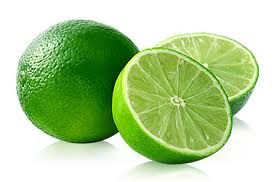I have wondered for years why lemons have seeds and limes don’t. No one could really give me a good answer until now.
LA times article
Why don’t limes have seeds
If you’d like to read the whole article, just click on the link above. I’m going to paraphrase a bit of it here.
Mr. Karp states that in the last 10 years or so there has been a boom in the quantity and variety of limes and their brethren here in the United States. California, of course is a major producer.
Most of us think of a lime as the big green thing that looks like and is about the same size of a lemon. Those are Persian limes or Tahitian or Bearss varieties and aren’t considered “true” limes. True limes are native to India or Asia and are known in the US as Mexican, Key or West Indian limes. They are distinctive because they are small, round, very acidic with seeds and tend to be more sour than the Persian limes. True limes also will yellow as they ripen in our cool winter climate.
The reason there are no seeds
And now for the reason there are no seeds in our most common, Persian limes. Originally, botanists gave the larger limes like the Persians their own “species” name, C. latifolia. But now, scientists understand that they are a natural hybrid of the true lime. You see, most citrus have two sets of chromosomes, but the large fruited limes have three. The three sets of chromosomes makes them sterile and therefore seedless. Mystery solved.
Options
I for one am very intrigued with the options available to us now. I love lemons and limes. They add just the perfect acid and flavor to drinks and dishes. If you haven’t tried a Meyer Lemon, you are in for a treat. Meyers look like a lemon but taste like a combination of lemon and orange. I grow Meyer Lemons and Persian limes at home in pots and if I can do it anyone can do it. They produce 8 to 15 fruits on each of my 5 plants each year and the blooms smell amazing.
What to look for
 Sweet Lime – these are a hybrid of citron and either sweet or sour orange. They are small, round with a prominent nipple. The are yellow when rip and have a pale yellow pulp. They are very low in acid and their flavor is appreciated most by Latin American and Middle Eastern cultures
Sweet Lime – these are a hybrid of citron and either sweet or sour orange. They are small, round with a prominent nipple. The are yellow when rip and have a pale yellow pulp. They are very low in acid and their flavor is appreciated most by Latin American and Middle Eastern cultures
 Kaffir Lime – these limes are related to “true” limes and are best known for the use of their leaves in Thai cooking. The fruit is round with a nob on the top and a bumpy rind. They are bitter and seedy. If harvested at all, the fruit is used in hair wash and insect repellent.
Kaffir Lime – these limes are related to “true” limes and are best known for the use of their leaves in Thai cooking. The fruit is round with a nob on the top and a bumpy rind. They are bitter and seedy. If harvested at all, the fruit is used in hair wash and insect repellent.
 Finger Lime – these bad boys are long and skinny like a finger and grow up to 3 inches long. The skin is thin and the fruit has firm juice vesicles that pop on the tongue like caviar. The flavor is a combination of lime and lemon with herbaceous notes.
Finger Lime – these bad boys are long and skinny like a finger and grow up to 3 inches long. The skin is thin and the fruit has firm juice vesicles that pop on the tongue like caviar. The flavor is a combination of lime and lemon with herbaceous notes.
 Rangpur Lime – these look like a mandarin orange which are medium sized and flattish with seeds. They are orange and are referred to as Mandarin Limes. They are native to India and is actually a hybrid of citron and mandarin. The rind and juice have a clean spicy flavor with is great in cocktails and marmalade.
Rangpur Lime – these look like a mandarin orange which are medium sized and flattish with seeds. They are orange and are referred to as Mandarin Limes. They are native to India and is actually a hybrid of citron and mandarin. The rind and juice have a clean spicy flavor with is great in cocktails and marmalade.
Conclusions
I’m looking forward to trying some of the different varieties as they become available. If you are a plant enthusiast you should try growing your own limes and lemons. Don’t let them dry out and feed them often and you’ll have fruit the year round. Even though the plant blooms in cooler weather, the fruit will develop slowly and remain on the tree until you are ready for them. Once you have cut into a lime or lemon that you just picked from your own tree and have it be so juicy it squirts you in the eye, you will never go back. – jughandle


